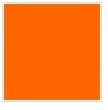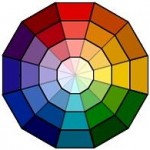Orange is one of the popular fashion colours for Spring 2012. But most of us either love it or hate it. If you love orange or love the idea of orange in your wardrobe right now, you may be in an orange phase.
The ORANGE PHASE is a social phase. Bright orange is the colour of enthusiasm and energy. It is emotionally and physically stimulating for the wearer and those who see it.
When wearing orange, it is a time of informality and close times with friends and family. People in an orange phase are open to new ideas and generally are in a happy time.

Because of the activity and forcefulness inherent with the colour, orange phase people can be overwhelming and often appear to take over in group situations.
Orange also represents a most vulnerable time: as the personality of the person is so open at this time, feelings are easily hurt. These people erect no emotional barriers. It is a non-threatening time, and people in this time are best friends with whomever they are with at the time.
If orange isn’t one of your most flattering clothing colour, add a little orange to your wardrobe in the form of an accessory. Bright orange doesn’t come around in fashion very often. So if you love orange, this is the time to wear it in your wardrobe… with confidence.
For more on the advantages of wearing bright colours see “Bright Colours Get Things Done”.








